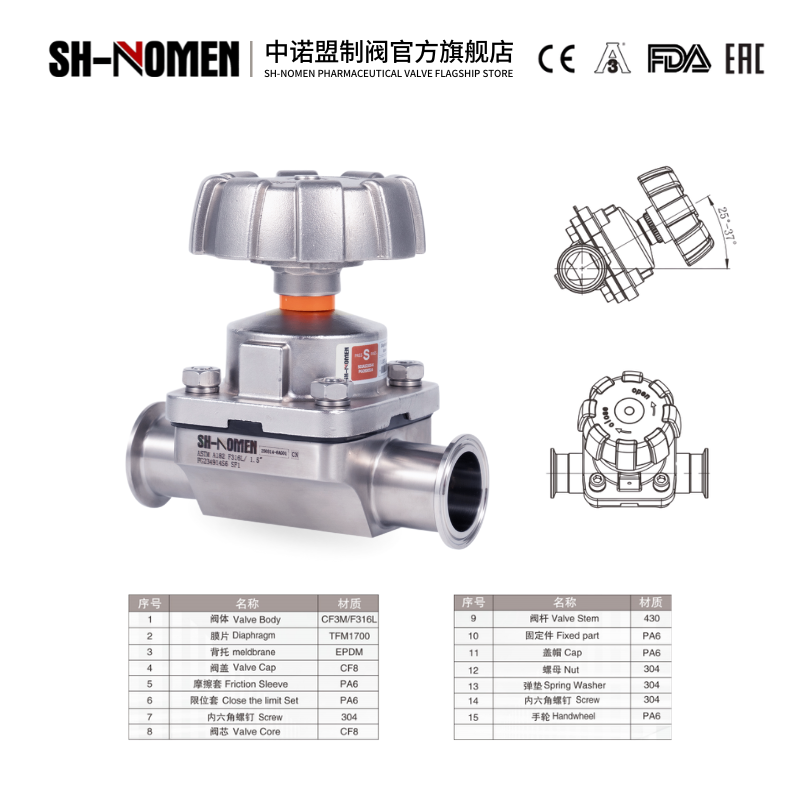

Diaphragm valves differ greatly from conventional valve designs. In this new type of shut-off valve, the closure element is a soft elastomeric diaphragm that completely isolates the valve body cavity from the bonnet cavity and the actuator. Today, diaphragm valves are widely used across many industries. Common variants include rubber-lined, fluoroplastic-lined, unlined, and all-plastic diaphragm valves.
Diaphragms are typically made of elastic, corrosion-resistant, non-permeable materials such as rubber or plastics, while valve bodies are constructed from plastics, fiberglass, ceramics, or metal lined with rubber.
Working principle
A diaphragm valve uses a flexible diaphragm as the closure element. When the handwheel or actuator moves the stem downward, the diaphragm is pressed against the weir or seat inside the valve body, shutting off flow. When the stem is raised, the diaphragm flexes upward, opening a full, unobstructed flow path.
Key features
1. Hermetic isolation – the diaphragm separates the flowing medium from the bonnet and actuator, eliminating leakage to atmosphere and protecting moving parts from corrosion or contamination.
2. Minimal dead space – streamlined body cavity reduces product entrapment, ideal for hygienic and ultra-pure applications.
3. Excellent chemical resistance – diaphragm and lining materials (EPDM, PTFE, FKM, etc.) can be selected for aggressive chemicals.
4. Bubble-tight shut-off – resilient diaphragm conforms to the seat, providing reliable zero leakage even with solids or slurries.
5. Easy maintenance – top-entry design allows diaphragm replacement without removing the valve from the pipeline.
6. Wide temperature/pressure range – suitable from vacuum to ~16 bar and from −40 °C to +180 °C (depending on material).